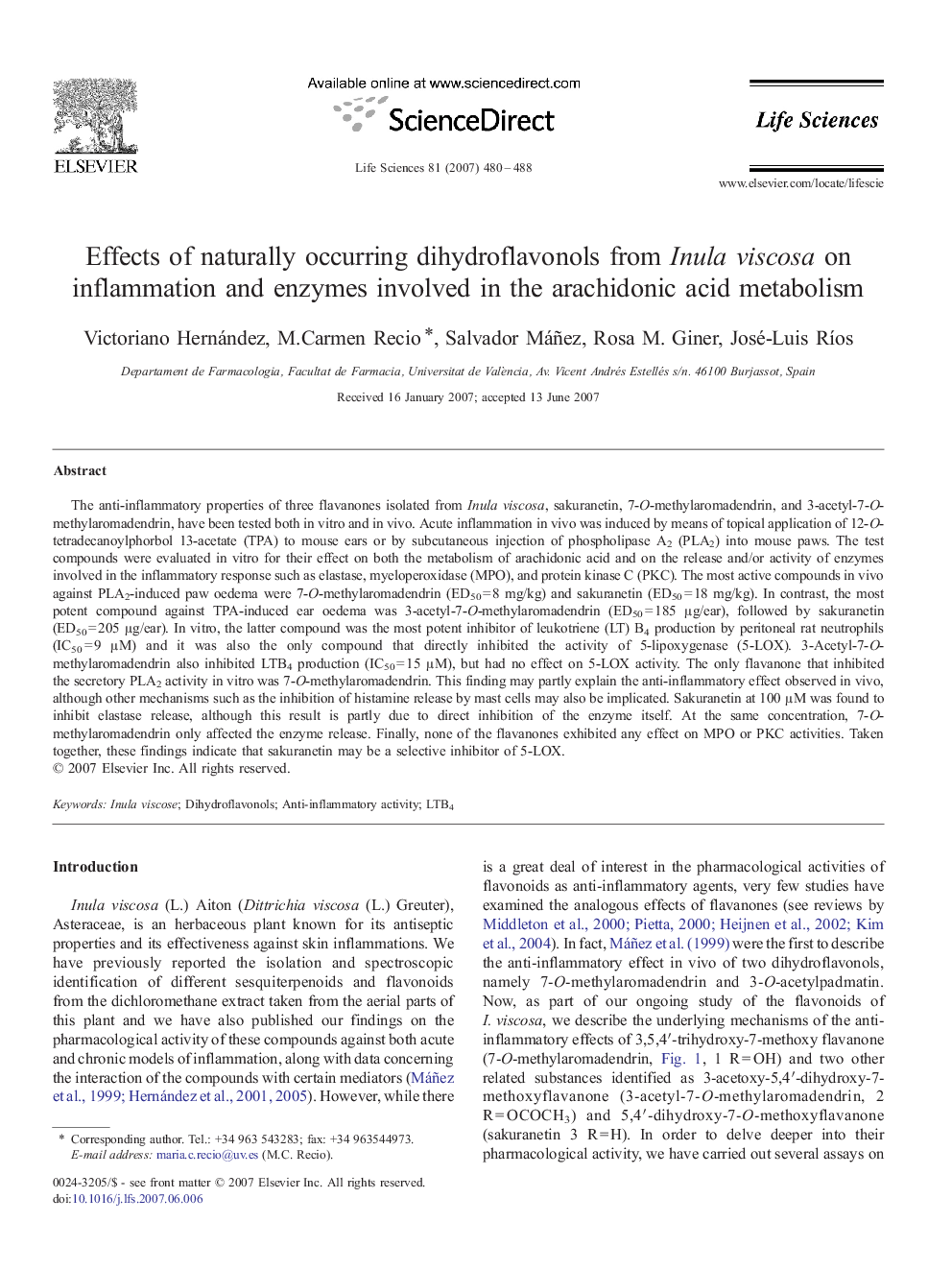| Article ID | Journal | Published Year | Pages | File Type |
|---|---|---|---|---|
| 2553339 | Life Sciences | 2007 | 9 Pages |
The anti-inflammatory properties of three flavanones isolated from Inula viscosa, sakuranetin, 7-O-methylaromadendrin, and 3-acetyl-7-O-methylaromadendrin, have been tested both in vitro and in vivo. Acute inflammation in vivo was induced by means of topical application of 12-O-tetradecanoylphorbol 13-acetate (TPA) to mouse ears or by subcutaneous injection of phospholipase A2 (PLA2) into mouse paws. The test compounds were evaluated in vitro for their effect on both the metabolism of arachidonic acid and on the release and/or activity of enzymes involved in the inflammatory response such as elastase, myeloperoxidase (MPO), and protein kinase C (PKC). The most active compounds in vivo against PLA2-induced paw oedema were 7-O-methylaromadendrin (ED50 = 8 mg/kg) and sakuranetin (ED50 = 18 mg/kg). In contrast, the most potent compound against TPA-induced ear oedema was 3-acetyl-7-O-methylaromadendrin (ED50 = 185 μg/ear), followed by sakuranetin (ED50 = 205 μg/ear). In vitro, the latter compound was the most potent inhibitor of leukotriene (LT) B4 production by peritoneal rat neutrophils (IC50 = 9 μM) and it was also the only compound that directly inhibited the activity of 5-lipoxygenase (5-LOX). 3-Acetyl-7-O-methylaromadendrin also inhibited LTB4 production (IC50 = 15 μM), but had no effect on 5-LOX activity. The only flavanone that inhibited the secretory PLA2 activity in vitro was 7-O-methylaromadendrin. This finding may partly explain the anti-inflammatory effect observed in vivo, although other mechanisms such as the inhibition of histamine release by mast cells may also be implicated. Sakuranetin at 100 μM was found to inhibit elastase release, although this result is partly due to direct inhibition of the enzyme itself. At the same concentration, 7-O-methylaromadendrin only affected the enzyme release. Finally, none of the flavanones exhibited any effect on MPO or PKC activities. Taken together, these findings indicate that sakuranetin may be a selective inhibitor of 5-LOX.
